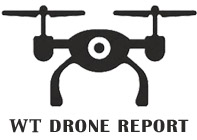|
|

|
  
Features
Update 2019/4/14
Drones - Fire Fighting

WILDFIRE HOT SPOTTING WITH DRONE TECHNOLOGY
By Gillian Ward
As water bombers, smoke jumpers and hotshots risked life and limb to suppress the British Columbia wildfires of 2016, firefighters Richard Sullivan and Robert Atwood launched their drone company with great results.
Hummingbird Drones flew its first mission over an actively managed fire in 2016, equipped with thermal imaging cameras, transmitting accurate fire data in real time to managers and crews on the ground. The trial project proved that firefighters equipped with a drone's eye view and the right sensors could accurately pinpoint the wildfire's hot spots, allowing resources to be directed in the most effective way, keeping personnel in the safe zone.
The initial idea struck in 2014, when the firefighter\business partners mobilized emerging drone technology with their personal experience in fighting wildfires, leading to the commercial trial with BC Wildfire Service.
"It was a lot of hard work to get started", said Sullivan. The company needed permission from each individual fire manager to operate the hot-spotting drone missions. Interfacing with Transport Canada regulations at the time, the company flew with a Special Flight Operations Certificate (SFOC) which allowed for night flying over the active fires, flying out of visual line of sight, above 400 ft and sharing the air space with manned water bombers and helicopters.
Sullivan says that in the three years since the successful trial with BC Wildfire Service, Hummingbird has run many successful missions, employing eight or nine full time staff in fire season. Crews of two or three operators fly equipment capable of fire spotting and mapping up to 2000 hectares in a single day. The drones are far more accurate than human pilots on visual observation, able to dip down for a closer look, providing real time kinematics, pinpointing the hotspots to within one meter with GPS.
Hummingbird has developed an infrared sensor that allows the operator to see the change in heat in the fire, directing the resources in real time, as data is collected, analyzed and transmitted to fire crews and crew managers on their cell phones. Hummingbird has also developed its own proprietary software, enabling rapid analysis of the raw data collected by the sensors.
Sullivan says, the drones employed for fire spotting are more expensive than typical gear, at approximately the value of a new sub-compact car. The equipment must endure high heat and smoke conditions, staying airborne longer than the basic, entry level drones. These heavy-duty working drones are capable of carrying a five pound payload and flying up to seventy kilometres per hour.
A typical fire spotting operation can run up to $20,000 or more, involving hundreds of hours for the equipment and crew. The savings to the BC Wildfire Service in terms of cost and risk to firefighters is harder to measure, but the drones have clearly proven their worth in the field.
Sullivan says the biggest challenge to the company's growth is not in the availability of work, but in finding competent and confident pilot operators. The confidence required for this work is only gained through first hand experience with active fire operations.
As with many other drone applications, the operator gains the advantaged view of the drone, along with the enhanced sensory capabilities to detect infra-red or thermal details on the ground. Being on the front lines, the drone pilot and crew need the firefighting experience to understand what they are seeing on their monitors and understand how changing atmospheric conditions may affect the fire.
Hummingbird receives requests for drone service from many sources, including tracking salmon up river to their spawning grounds, forestry work and all kinds of other requests. Currently based in Kamloops BC, the company is open to expanding their services beyond the BC border, especially in the realm of fire spotting.
The new Transport Canada regulations will not change much for Hummingbird, as most of the fire spotting work still requires a Special Flight Operations Certificate (SFOC) for each active fire.
Watch for the next segment of the Drone Files, on applications in Agriculture.
gillian@watertoday.ca
|
|
|
Have a question? Give us a call 613-501-0175
All rights reserved 2025 - WATERTODAY - This material may not be reproduced in whole or in part and may not be distributed,
publicly performed, proxy cached or otherwise used, except with express permission.
|
| |